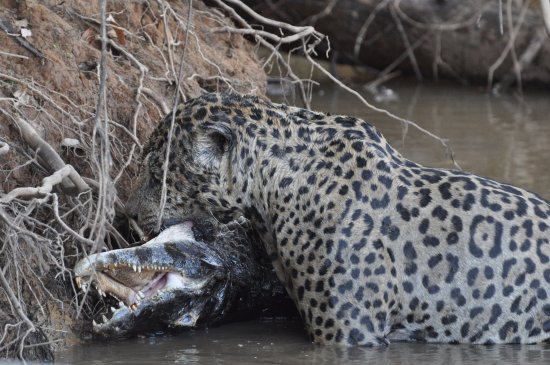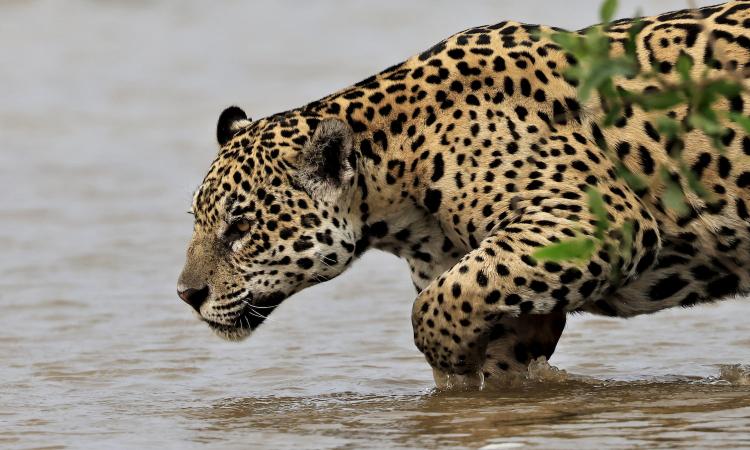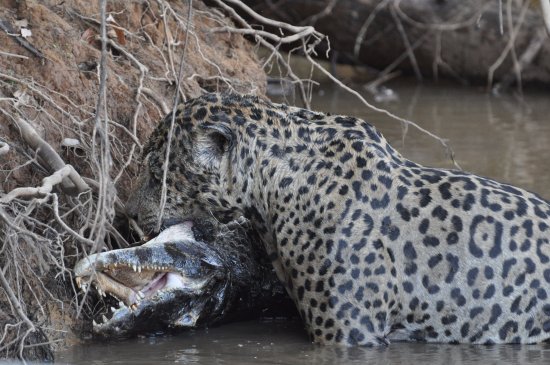Discovering Jaguar Paradise: An Ethical Photographer's Journey Through the Southern Pantanal

It was a moment etched forever in my memory: the golden light of the setting sun painting the Rio Negro as a jaguar mother and her cub playfully tumbled on the riverbank. Their raw power, their effortless grace, and the sheer vulnerability of that little cub transformed something within me. It solidified my commitment to ethical wildlife photography – to capturing the beauty of nature without disturbing its delicate balance and to using my images to inspire conservation. The Pantanal, the world's largest tropical wetland, became more than just a location; it became a calling. This is my journal from a week spent in the Southern Pantanal, a photographic pilgrimage to witness and share its wonders.
The Heart of the Pantanal: Landscape and Light
The Southern Pantanal is a world of dramatic contrasts. Vast open grasslands, seemingly endless and bathed in a perpetual golden light, give way to gallery forests that line the life-giving rivers. The Transpantaneira highway, a dirt road stretching over 140 kilometers, is our artery through this wilderness. Salinas, shimmering white expanses of salt flats, attract an astounding array of wildlife. The heat is intense, a palpable force that demands respect, yet the river breezes offer a welcome respite. During the annual floods, much of this land disappears beneath the water, reshaping the landscape and forcing both flora and fauna to adapt. It's a dynamic, breathing ecosystem unlike any other.
In Pursuit of the Elusive: Jaguar Photography
The Pantanal is, without a doubt, one of the best places on Earth to photograph jaguars in the wild. The concentration of these magnificent cats is higher here than almost anywhere else.
Locations Along the Transpantaneira
Certain bridges along the Transpantaneira highway are renowned jaguar hotspots. The patience of waiting for hours, sometimes days, is rewarded by the privilege of witnessing these apex predators in their natural habitat.
River Safaris on the Cuiabá River
However, for consistent sightings, a boat trip on the Cuiabá River is unparalleled. We navigate the waterways, silently gliding past the riverbanks, always scanning for that telltale flash of gold. It’s crucial to maintain a respectful distance. Ethical jaguar photography in the Pantanal means prioritizing the animal's well-being above all else. This involves minimizing disturbance by avoiding loud noises, sudden movements, and keeping a significant distance between the boat and the jaguar.
Gear Recommendations
I primarily use a Canon EOS R5 with a 100-500mm lens and a 1.4x extender. This setup allows me to capture incredible detail from a safe distance, ensuring the jaguars are not stressed by our presence.
Caiman Close-Ups: A Different Perspective
While jaguars may steal the spotlight, the Pantanal's caimans are equally fascinating subjects. During the dry season, when the water levels recede, these reptiles congregate in smaller pools, offering unique photographic opportunities.
Low-Angle Photography
For a dramatic perspective, I often use a GoPro attached to a long pole, allowing me to capture low-angle shots that bring the viewer face-to-face with these ancient creatures. Of course, safety is paramount, and I always maintain a safe distance to avoid any unwanted encounters.
A Symphony of Wings: Bird Photography
The Pantanal is a birder's paradise. The Rio Miranda, in particular, is a haven for an astonishing variety of avian species, from the vibrant hyacinth macaw to the stately jabiru stork.

Capturing Birds in Flight
To capture birds in flight, a gimbal head is essential. It allows for smooth, fluid movements, enabling me to track even the most erratic flight patterns. The key is patience, anticipation, and a deep appreciation for the beauty of these winged wonders. Photographing Pantanal birds along the Transpantaneira offers diverse opportunities because of the concentrated ecosystem.
Experiencing Pantanal Culture
The Pantanal isn't just about wildlife; it's about the people who call it home. I was fortunate enough to witness and document several unique events during my stay.
Controlled Burns: An Ecological Necessity
I observed a controlled burn, a carefully managed process used to maintain the health of the grasslands. It may seem counterintuitive, but these fires play a crucial role in preventing larger, uncontrolled wildfires and promoting biodiversity. It’s important to consider ethical implications when photographing controlled burns in the Pantanal and put safety first.
Cattle Drives: A Sustainable Tradition
I also documented a cattle drive on a sustainable ranch. These ranches play a vital role in jaguar conservation by protecting vast tracts of habitat. It's inspiring to see how ranchers and jaguars can coexist, creating a model for sustainable land management. There are also many photography Pantanal cattle drive opportunities to be found.
Jaguar Festival: Celebrating Conservation
Attending the annual Jaguar Festival in Miranda was a highlight. The local community is deeply committed to jaguar conservation, and the festival is a testament to their dedication. It's a powerful reminder that conservation is a collaborative effort, requiring the involvement of everyone from ranchers to scientists to tourists.
A Taste of the Pantanal: Local Cuisine
No trip to the Pantanal is complete without experiencing the local cuisine. The refreshing tereré drink, a type of iced mate, is a staple in the intense heat. Sopa paraguaia, a savory cornbread, is a hearty and delicious meal. And the espetinho de carne, grilled meat skewers served at local ranches, are simply divine. It's important to support local, sustainable ranchers by sourcing your food from them.
Ethical Considerations: The Heart of Conservation
Throughout my journey, ethical considerations have been at the forefront of my mind. Ethical jaguar photography Pantanal means prioritizing the animal's well-being above all else.
- Minimizing disturbance: Maintaining a safe distance, avoiding flash photography, and respecting animal behavior are paramount.
- Supporting local communities: Staying at eco-lodges, hiring local guides, and purchasing locally made products ensures that tourism benefits the people who live here.
- Promoting conservation: Using my photography to raise awareness about the threats facing jaguars and the Pantanal ecosystem is my way of giving back.

A Call to Action: Protect the Pantanal
The Pantanal is a treasure, a place of unparalleled beauty and biodiversity. It's our responsibility to protect it. I urge you to visit the Pantanal responsibly, supporting eco-lodges and tour operators that prioritize conservation. Learn how to ethically photograph jaguars in the Pantanal before visiting. By supporting local communities and promoting conservation, we can ensure that future generations have the opportunity to witness the magic of the Pantanal.
Support Jaguar Conservation: Panthera Recommended Eco-Lodges:
- Caiman Ecological Refuge
- Pousada Aguapé
- Refúgio da Ilha
Let's work together to protect this extraordinary place. The best time to photograph jaguars in the Pantanal is during the dry season, but visit responsibly any time.